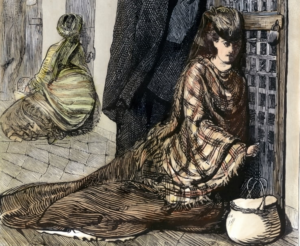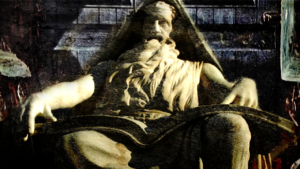Art & Religion

By Brendan Heard and Iásonas Lupus.
Artistic creativity is integral to religious tradition, and vise versa. To explore the hidden we require intricate forms of symbolism — and the hidden world affects us in return through the same medium: material creativity, ideas, and an encompassing world-view.
The disciplines of music, dance, fashion, poetry, painting, architecture, philosophy, sculpture, literature, pottery, etc will only transcend when striving for and inspired by the divine. The genealogical and the metaphysical are the ultimate impetus of art, and all these are but fibers of a larger weave, which is too large and incomprehensible to understand in its whole. What we can tell with certainty is when the weave is weakened, or torn — by the stumbling disarray of artistic confusion, because (as we have now) there is no reason for art. The weave is the pattern of order, within which laws set the limits to excel against. An undone weave is chaos.
People are awestruck by the artistic heights reached in ages of high tradition. These works were motivated by dutyful mythic veneration, which is a numinous observance, encompassing many generations, and will outlive each individual life. Being itself a larger entity, which is the blood. Tradition is an esoteric exploration, and operates in a sphere of mystery above the understanding of individual minds, and manifests itself organically, as a folk-routine. It is artistic mastery which constructs the framework for esoteric traditions, in aesthetic manner (architecture, and literature primarily) which binds the flesh to the idea. It is ritual which in turn strengthens the spirit, and grants the culture cause in the mortal world — the power to shape and husband the land to its design.
People have always been enchanted by the numinous and sacred, when religion captivates the imagination of its seeker. Art, when divinely inspired, has the capacity to transform the seeker’s consciousness. We currently cultivate an anti-art, out of guilt and an imposed status-quo. Without true artistic skill interwoven into society, no spirituality can make a conceivable rebirth. No one is going to be enchanted by the holy mystery within a religious temple inspired by PostModernism, except the guilt-ridden masochist looking to further flog themselves. But such people are innately atheistic, and can not abide by a law or a duty of any kind.
Being around the well-crafted is evidence of a strong cultural weave, a healthy horse which inspires future-optimism. Such art is the the material evidence of mystery veneration, and the mystery in return uplifting the art, and its creators. A new art, like a new cult, which is not like the old, yet observes the ancient laws, is a fresh pattern to a weave which has come loose.
The greatest danger for most of us is not that our aim is too high and we miss it, but that it is too low and we reach it.
– Michelangelo











